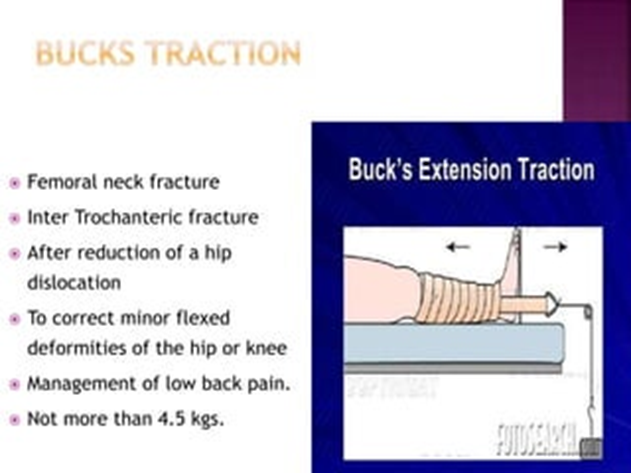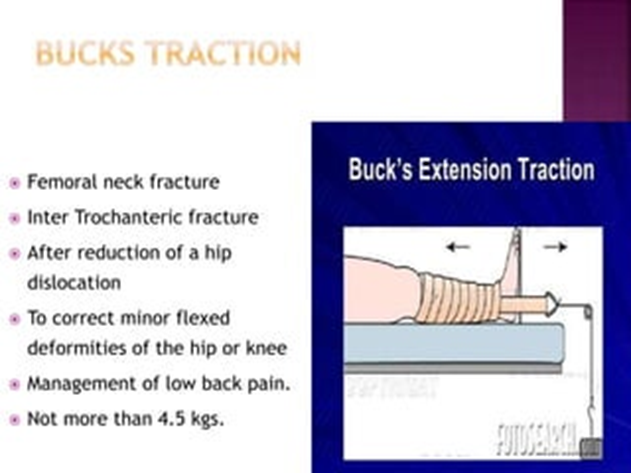ATI Custom PN Basic Care and Comfort assessment
ATI Custom PN Basic Care and Comfort assessment ( 50 Questions)
An older adult client on an orthopedic unit has an intracapsular fracture of the right hip following a fall. The client is in Buck’s traction and will have hip prosthesis surgery in the morning. The nurse should reinforce with the client that this type of traction promotes which of the following outcomes?
Reduction of the fracture:Buck's traction is not primarily intended for the reduction (realignment) of the fractured bones. While it may help maintain proper alignment, the primary goal is to provide temporary immobilization and relieve muscle spasms until more definitive treatment, such as surgery, can be performed.
Relief from muscle spasms:This is the correct answer. Buck's traction is commonly used to alleviate muscle spasms associated with hip fractures. The traction force helps to relax the muscles, reduce pain, and maintain the alignment of the fractured bones.

Alignment of the pins:
Buck's traction does not involve the insertion of pins into the bone. It uses a boot attached to the leg, and the traction force is applied externally to the limb to achieve the desired therapeutic effects.
Support for moving the extremity:Buck's traction is not intended to support active movement of the extremity. Instead, it provides temporary immobilization to prevent further injury and facilitate the healing process before more definitive interventions, such as surgery, are undertaken.
A. Reduction of the fracture:
Buck's traction is not primarily intended for the reduction (realignment) of the fractured bones. While it may help maintain proper alignment, the primary goal is to provide temporary immobilization and relieve muscle spasms until more definitive treatment, such as surgery, can be performed.
B. Relief from muscle spasms:
This is the correct answer. Buck's traction is commonly used to alleviate muscle spasms associated with hip fractures. The traction force helps to relax the muscles, reduce pain, and maintain the alignment of the fractured bones.
C. Alignment of the pins:
Buck's traction does not involve the insertion of pins into the bone. It uses a boot attached to the leg, and the traction force is applied externally to the limb to achieve the desired therapeutic effects.
D. Support for moving the extremity:
Buck's traction is not intended to support active movement of the extremity. Instead, it provides temporary immobilization to prevent further injury and facilitate the healing process before more definitive interventions, such as surgery, are undertaken.

